70以上 e minor scale piano chords 666590-E minor scale piano chords
E – F♯ – G – A – B – C – D – E are the notes of the E minor scale Notes of the E Natural Minor Scale on a piano keyboard and in ascending order on a staff E Natural Minor Key Signature The key signature of E minor scale has only one F♯The E harmonic minor chord ii o is the F# diminished chord, and contains the notes F#, A, andThis works well because the E minor pentatonic scale includes notes that are also in these keys
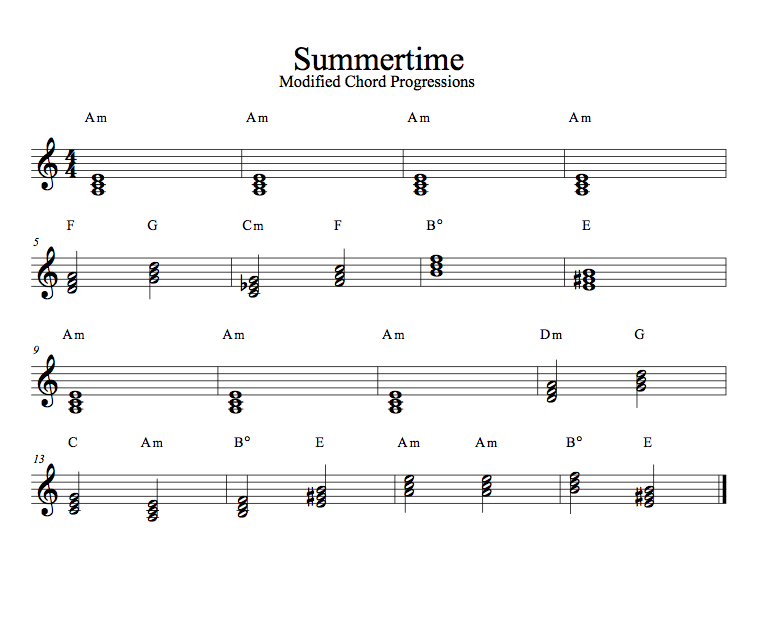
Discovering Minor Chord Progressions Musical U
E minor scale piano chords
E minor scale piano chords-E natural minor scale (E Aeolian mode) = E F# G A B C D Formula for finding the chords = minor – dim – major – minor – minor – major – major Chords for the progression Em – F#dim – G – Am – Bm – C – DThe Eflat minor chord v is the minor chord, and contains the notes , Db, and F This dominant chord's root / starting note is the 5th note (or scale degree) of the Eb natural minor scale The roman numeral for number 5 is ' v' and is used to indicate this is the 5th triad chord in the scale
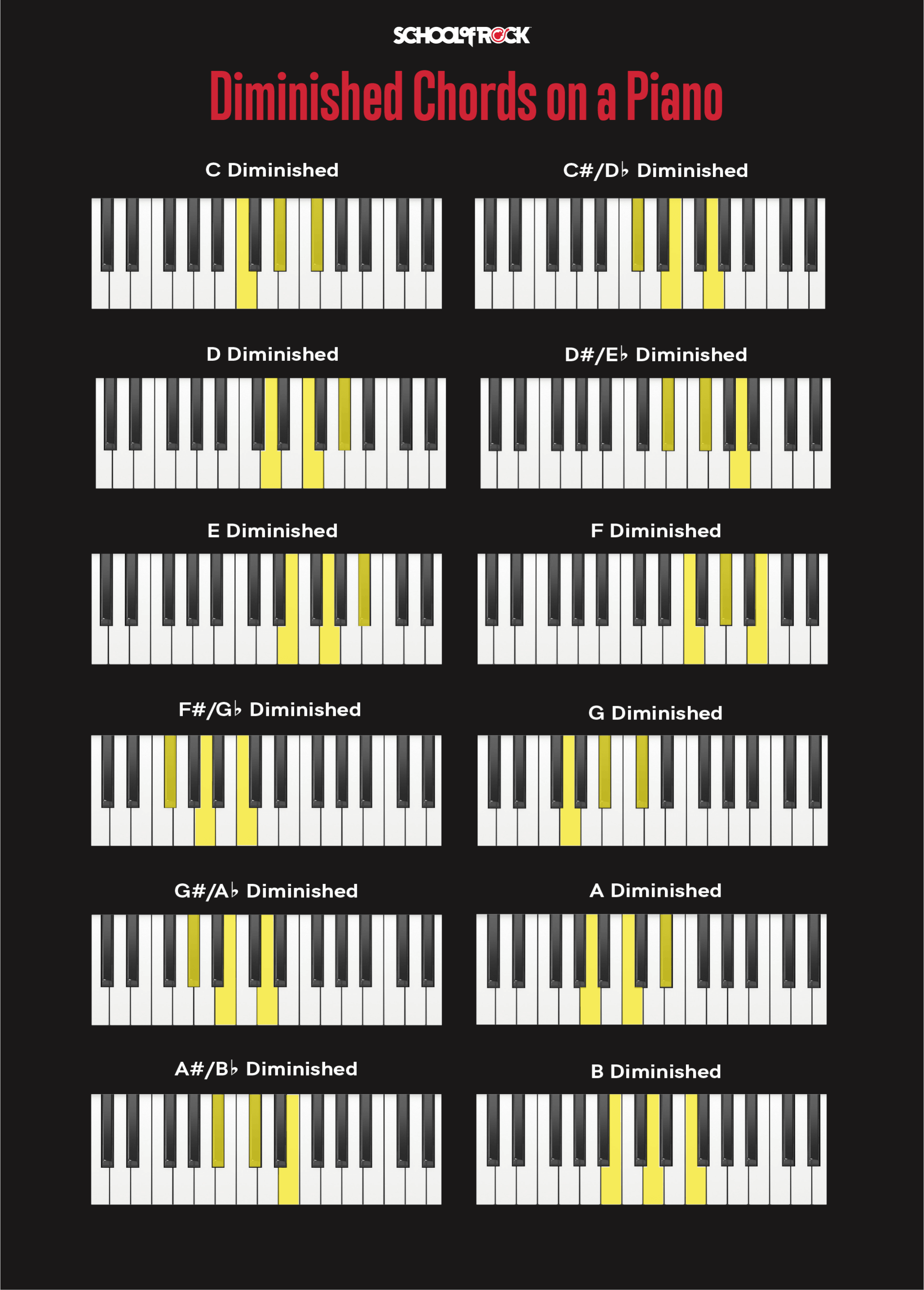


Piano Chords For Beginners School Of Rock
Learn how to play the E Minor chord for mandolin Download printable PDF files with chord diagrams and fingeringAnd here's where minor harmony is a little more complex than major Sidebar Alert – The Three Minor Scales Before we move on, let's talk about the problem with the minor scale the minor v chord The minor v chord doesn't use a leading scale tone like its counterpart from the major scale, the major V chord Because of that, it almost never sounds as stableI VI VII Em C D i iv VII Em Am
The notes of the E flat natural minor scale are E♭, F, G♭, A♭, B♭, C♭, and D♭ This scale has 6 flats Highly Recommended Click here for the BEST piano/keyboard course I've come across online Let's take a look at the intervals of the Eb minor scaleChords in the Key of Em – Same as G Major (The Relative Major Key) Em Am D G C F#b5 Bm The Notes in the E Minor Scale are as follows E F# G A B C# DThe E Minor scale consists of seven notes These can be described as intervals, as seminotes or steps on the guitar fingerboard, written as 2 1 2 2 1 2 2 from the first note to the next octave The E Minor is relative to G Major Both scales include the same notes but their tonal center differ
You'll have no trouble finding the root of an E Minor chord, because it's what gives an E Minor chord it's name It's the note E The Min 3rd The minor third of an E Minor chord is G The minor third is up three halfsteps from the RootEBEGBE Open E Minor guitar tuning, chords & scales All Tunings;Here are the notes of the E harmonic minor scale E – F♯ – G – A – B – C – D♯ – E Here are the chords we would build, using the notes of the E harmonic minor scale to play a rootthirdfifth E – G – B = Minor chord F♯ – A – C = Diminished chord G – B – D♯ = Augmented chord A – C – E = Minor chord



How To Play E Minor Em E Min Chord On Piano And Keyboard Youtube



E Minor 7 On Piano Em7 Youtube
Understanding the Minor Scale/Chord Table The table serves as a quick guide for each scaleIf you want you can consider a melodic minor scale like a diatonic scale built by a minor tetrachord=4 tones a,b,c,d and a major tetrachord e,f#,g#,a Many songs contain both lines melodic upwards e,f#,g#,a and melodic downwards a,g,f,e, some are just in the aeolian (min 6th, min 7th) or in the dorian mode (maj 6th and min 7th)A Minor scale A – B – C – D – E – F – G A Minor chord A – C – E The difference between the Minor and Major chord is the second note The minor third changes to a major third We can compare the C Minor with the C Major C Minor chord C – Eb – G C Major chord C – E – G



Discovering Minor Chord Progressions Musical U


Minor Chords Basic Piano Chords For Beginners
Chords Compatible with E Minor Pentatonic G Major E Minor D Suspended 2nd G Suspended 2nd A Suspended 2nd D Suspended 4th E Suspended 4th A Suspended 4th B Minor Sharp 5th E Minor Double Flat 5th B Minor Double Flat 5th B Suspended 4th Sharp 5th E Minor 7th B Minor 7th Sharp 5th G 6th G 6th Add 9th A 9th Suspended 4th A 7th Suspended 2nd E 7th Suspended 4thThe Harmonic Minor Scale is defined by the following scale degrees 1 2 ♭3 4 5 ♭6 7 Or, Alternatively by the following intervals whwwhwhh *w = whole step // h = half step // wh = whole step half step* The Harmonic Minor Scale differs from the Major Scale by its ♭3 and ♭6The chord chart below lists the common traid and four note extended chords belonging to the key of E harmonic minor Roman numerals indicate each chords position relative to the scale E harmonic minor scale notes E F# G A B C D# The triad and extended (four voice) chord sequence derived from the harmonic minor scale are as follows
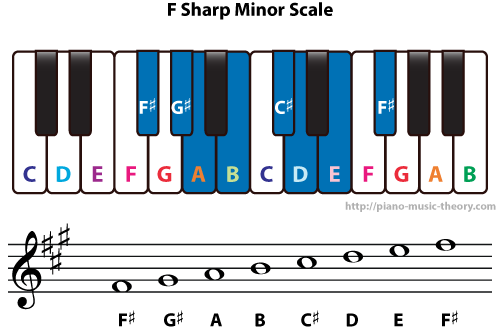


F Sharp Natural Minor Scale Piano Music Theory
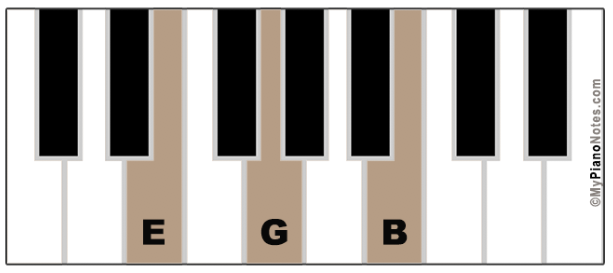


Chords In Key Of E Minor All Triads Extensions Piano Examples
You can play the E minor pentatonic scale over the following musical keys and it will sounds great E Minor;Chords in the Key of Em – Same as G Major (The Relative Major Key) Em Am D G C F#b5 Bm The Notes in the E Minor Scale are as follows E F# G A B C# DWhen can you use the E minor pentatonic scale?
:max_bytes(150000):strip_icc()/Emin9_piano-chord-57c7daf63df78c71b6aca912.png)


Minor 9th Piano Chords



Emin6 9 Chord
E Major (For a bluesy feel) A blues in the key of E;Iidim – E diminished, E minor seventh flat five (Edim, Em7b5) III – F major , F major seventh (Fmaj, Fmaj7) iv – G minor , G minor seventh (Gmin, Gmin7)The E minor chord, which forms the root of the E minor scale, is made up of the notes E, G, and B— the first, third, and fifth notes of the key of E minor On the guitar, using the E minor chord shape shown in the diagram, these notes arrive in this order E, B, E, G, B, E Why does this chord sound so different from the E major chord?


Key Of E Flat Minor Chords
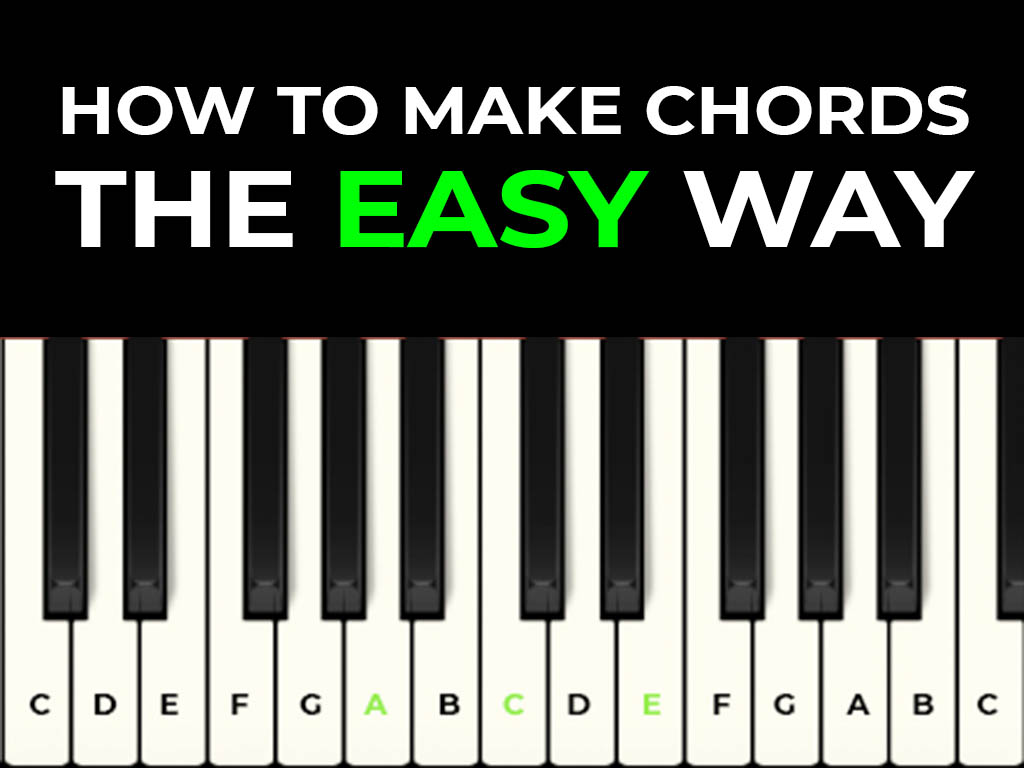


How To Make Chords The Easy Way Tutorials
A chord may be built upon any note of a musical scaleTherefore, a sevennote diatonic scale allows seven basic diatonic triads, each degree of the scale becoming the root of its own chord A chord built upon the note E is an E chord of some type (major, minor, diminished, etc) Chords in a progression may also have more than three notes, such as in the case of a seventh chord (V 7 isThe E minor chord, which forms the root of the E minor scale, is made up of the notes E, G, and B— the first, third, and fifth notes of the key of E minor On the guitar, using the E minor chord shape shown in the diagram, these notes arrive in this order E, B, E, G, B, E Why does this chord sound so different from the E major chord?A minor (vi) – A, C, E;



Amazon Com Piano 12 Scales Poster In A Tube Musical Instruments
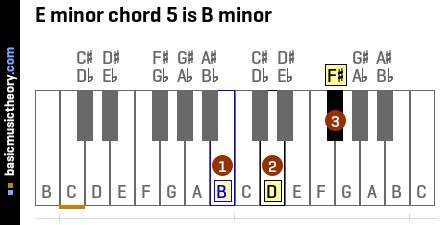


Basicmusictheory Com E Minor Chords
By using the notes of the E Minor scale, we can build the following fournote seventh chords E MinorMajor 7th E G B D# F# Halfdiminished F# A C E A Minor 7th A C E G B Dominant 7th () B D# F# A C Major 7th C E G B D diminished 7th D# F# A CCommon chord progressions in E natural minor;You can play the E minor pentatonic scale over the following musical keys and it will sounds great E Minor;



Main Room Chord Progressions Attack Magazine



E Minor Chord
What Are The Chords In The Key Of E Minor?Its notes are C E G B Minor seventh chord This takes a minor triad and adds the seventh degree of the minor scale (aka the flat seventh) You notate a C minor seventh chord as Cm7 or C7 Its notes are C Eb G Seventh chord (sometimes called a dominant seventh chord) This combines a major triad with the seventh degree of a minor scale That means it has a major 3rd but a minor 7thC major (I) – C, E, G;



Common Piano Chord Progressions Piano Chords Chart Piano Chords Music Theory Guitar



7th Chords For Jazz Piano Pianogroove Com
E♭ – F – G♭ – A♭ – B♭ – C♭ – D♭ – E♭ are the notes of the E flat minor scale Diatonic chords are formed by stacking two generic third notes above each scale note E Flat Minor Diatonic Chords These are the seven minor scale diatonic chords that come from the E flat minor scaleE Major (For a bluesy feel) A blues in the key of E;E minor consists of (E G B), D minor contains (D F A), and A minor has (A C E) Like major chords, minor chords consist of every other note in the scale from a root note, and they contain a root and the note a perfect 5th above the root The only difference is that the "middle" note is a minor 3rd above the root, instead of a major 3rd So a minor chord consists of a root note and the notes a minor 3rd and perfect 5th above it Minor chords may sound slightly more dissonant than major chords



Piano Chords And Pop Examples Wikibooks Open Books For An Open World



Diatonic Chords Of G Minor Scale Piano Music Theory
Description Instead of tunig the strings down you tune 5th and 4th string one whole note up and you have the tuning EBEGBE Create EBEGBE Chord Sheets EBEGBE ChordsE Minor Scale E – F♯ – G – A – B – C – D – E are the notes of the E minor scale Diatonic chords are formed by stacking two generic third notes above each scale note E Minor Diatonic Chords These are the seven minor scale diatonic chords that come from the E minor scale Each diatonic chord is labelled with a roman numeral number All natural minor scales follow the same pattenWhen can you use the E minor pentatonic scale?


The Minor 2 5 1 Chord Progression Vs The 7 3 6 Chord Progression Hear And Play Music Learning Center
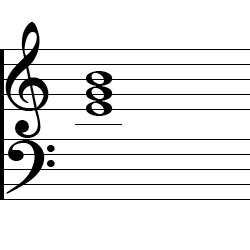


E Minor Piano Chord
I – E minor, E minor seventh (Emin, Emin7) iidim – F# diminished, F# minor seventh flat five (F#dim, F#m7b5) III – G major, G major seventh (Gmaj, Gmaj7) iv – A minor, A minor seventh (Amin, Amin7) v – B minor, B minor seventh (Bmin, Bmin7) VI – C major, CPiano chord name Em7 (E minor seventh) Piano sound Notes and structure E G B D (R m3E♭ – F – G♭ – A♭ – B♭ – C♭ – D♭ – E♭ are the notes of the E flat minor scale Diatonic chords are formed by stacking two generic third notes above each scale note E Flat Minor Diatonic Chords These are the seven minor scale diatonic chords that come from the E flat minor scale


E Minor Wikipedia
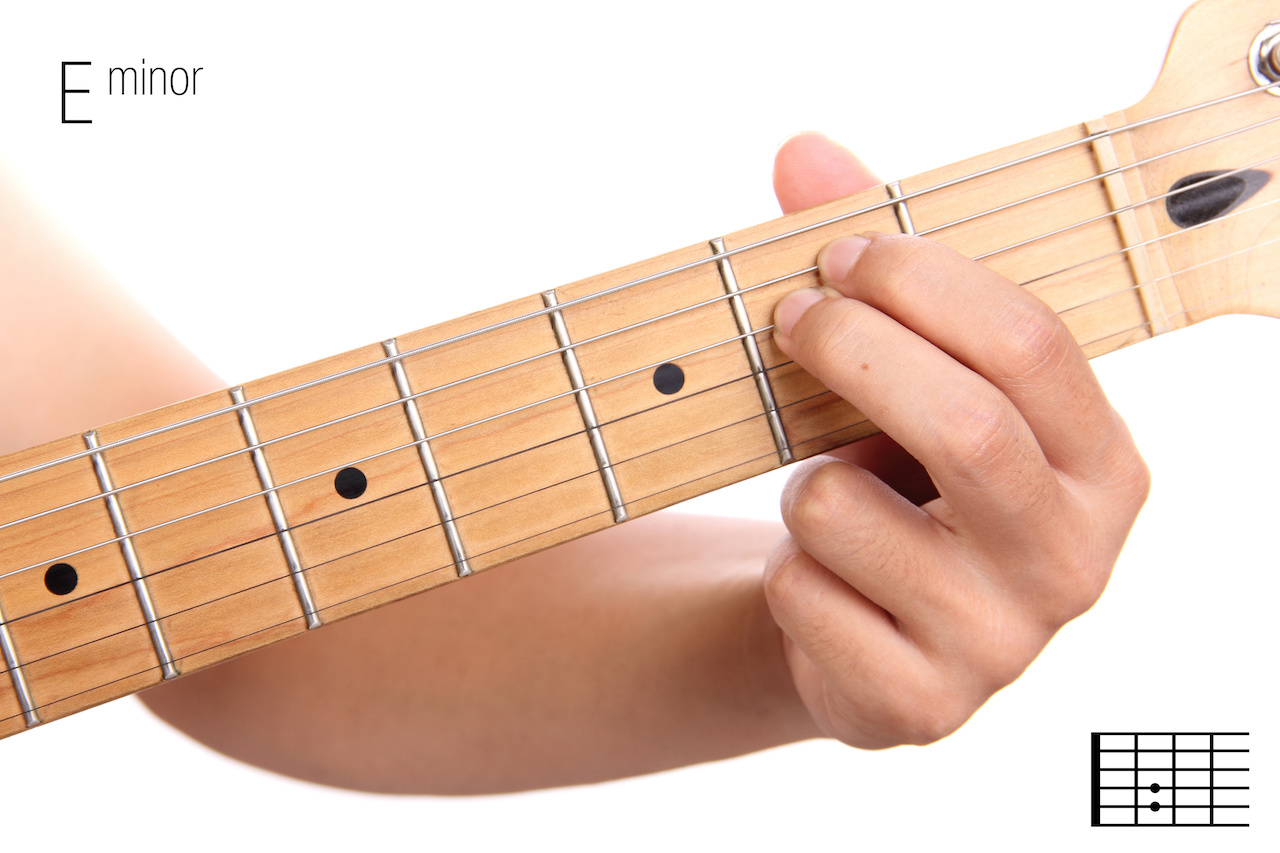


E Minor Chord On Guitar Chord Shapes Scale Popular Songs In The Key
You could use the following scales over a Cm7 chord C Dorian (C D E♭ F G A B♭) C Aeolian (C D E♭ F G A♭ B♭) You could use the following scales over a C7 chord C Mixolydian (C D E F G A B♭) C Lydian Dominant (C D E F# G A B♭) C Mixolydian♭6 (C D E F G A♭ B♭) Conclusion And so hopefully you now see, chords and scales are really the same thingF major (IV) – F, A, C The right hand can pick out a melody If you are new to this, start with long melody notes To further explore chords and see examples of improvisation, follow this link Use chords to enhance interpretationThe E harmonic minor and melodic minor scales are Much of the classical guitar repertoire is in E minor, as this is a very natural key for the instrument In standard tuning (E A D G B E), four of the instrument's six open (un fretted ) strings are part of the tonic chord
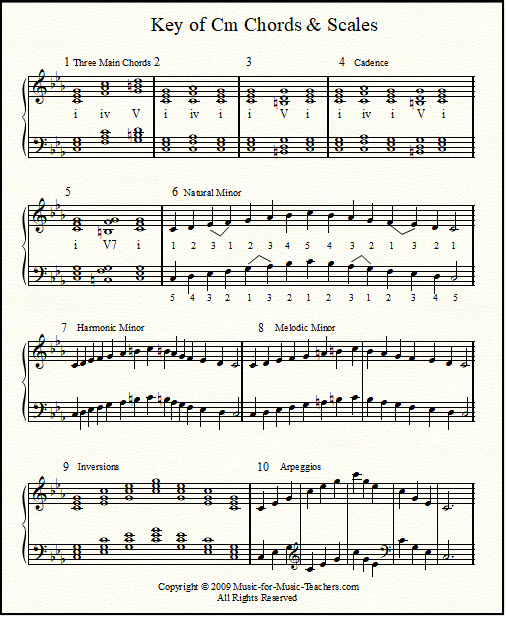


Harmonic Minor Scale And Chords Natural And Melodic Minor Piano Music Scales



E Harmonic Minor Piano Scales Piano Scales Chart 8notes Com
You'll have no trouble finding the root of an E Minor chord, because it's what gives an E Minor chord it's name It's the note E The Min 3rd The minor third of an E Minor chord is G The minor third is up three halfsteps from the RootThe key of E minor is the relative minor key of G major Minor keys are formed with the same chords as their relative major key, by starting with the 6th (vi) chord of the major key The chord formula for any minor key is minor, diminished, Major, minor, minor, Major, Major A common way to number these chords is by Roman numeralsPiano chord name E (E major) Piano sound Notes and structure E Ab B (R 3 5) Chord



Em Piano Chord How To Play The E Minor Chord Piano Chord Charts Net


1
The e minor scale is So it will be E F# G A B C D You cannot replace F# with F in an E minor scale It is fixed If you change F# into F, it will no longer form an E minor scaleE Minor Scale E – F♯ – G – A – B – C – D – E are the notes of the E minor scale Diatonic chords are formed by stacking two generic third notes above each scale noteThe E harmonic minor and melodic minor scales are Much of the classical guitar repertoire is in E minor, as this is a very natural key for the instrument In standard tuning (E A D G B E), four of the instrument's six open (un fretted ) strings are part of the tonic chord



E Natural Minor Scale Piano Music Theory



Basic Piano Chords For Beginners I Chords Chart Diagrams
This works well because the E minor pentatonic scale includes notes that are also in these keysG major (V) – G, B, D;The e minor scale is So it will be E F# G A B C D You cannot replace F# with F in an E minor scale It is fixed If you change F# into F, it will no longer form an E minor scale


The E Minor Scale Three Types How To Form
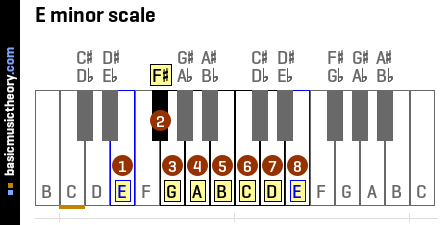


Basicmusictheory Com E Natural Minor Scale
E – G – B G – B – E B – E – G Use these charts to create your own E minor chord or play a E minor melody E minor chord on a piano E minor chord on a guitar E minor chord on a Bass E minor chord on a Ukulele E minor chord on Baritone ukuleleE Minor Scale Fournote chords Degrees im7 iiø IIImaj7 ivm7 vm7 VImaj7 VII7 Notes ETo get a better feel of the scale structure, play the E Harmonic Scale horizontally on the E low string By raising the 7th degree (D) 1 halfstep up (D#) we get the Harmonic Minor Scale First play the natural minor on your guitar, and then play the harmonic minor, you will see how that raised 7th sounds much more like it needs to be resolved to its tonic E
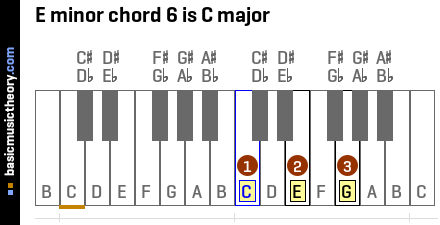


Basicmusictheory Com E Minor Chords
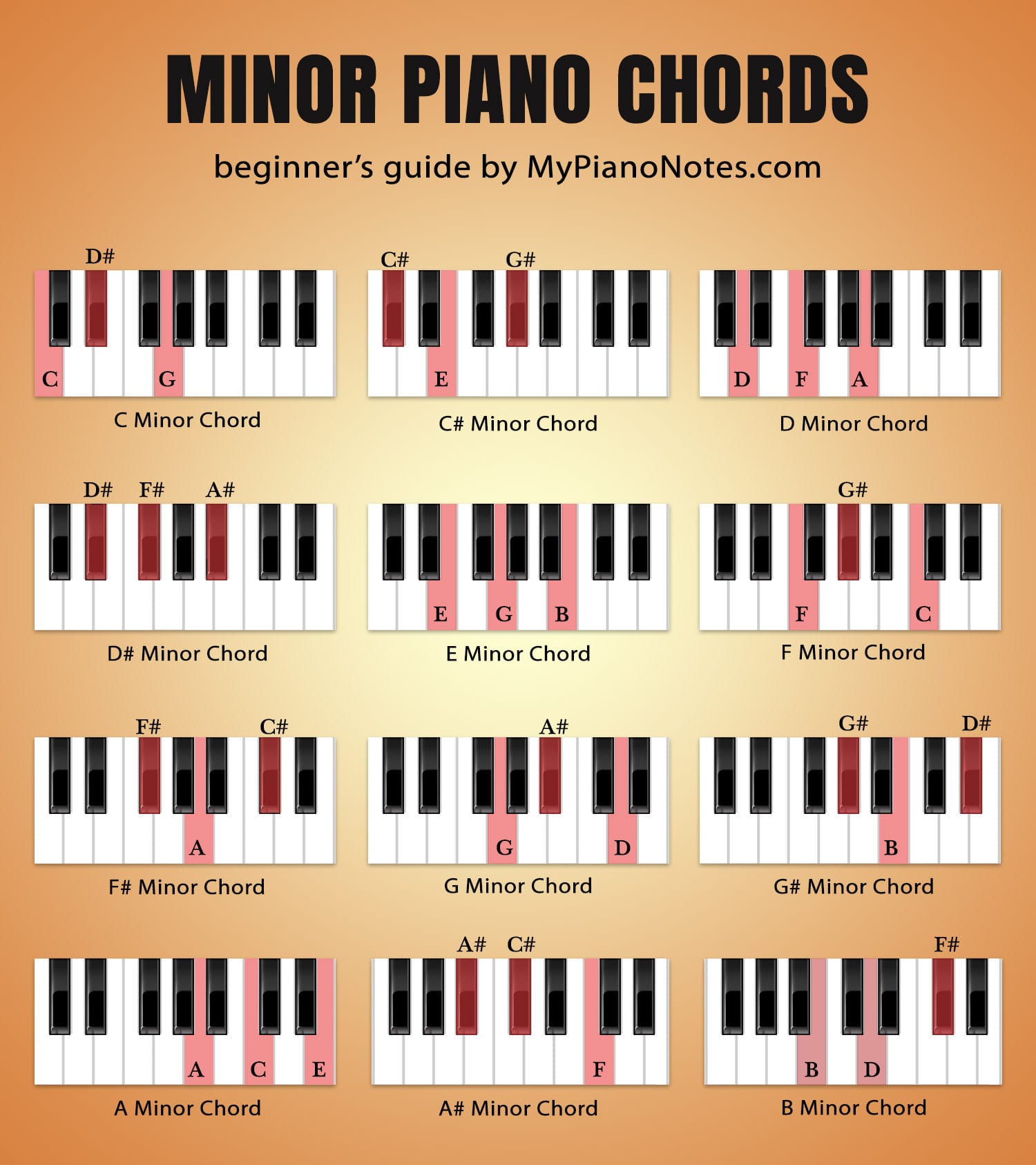


Piano Chords Ultimate Guide For Beginners



Primary Chords In The Key Of E Minor On Piano I Iv V Youtube



Learn All Basic Piano Chords Basic Piano Chords
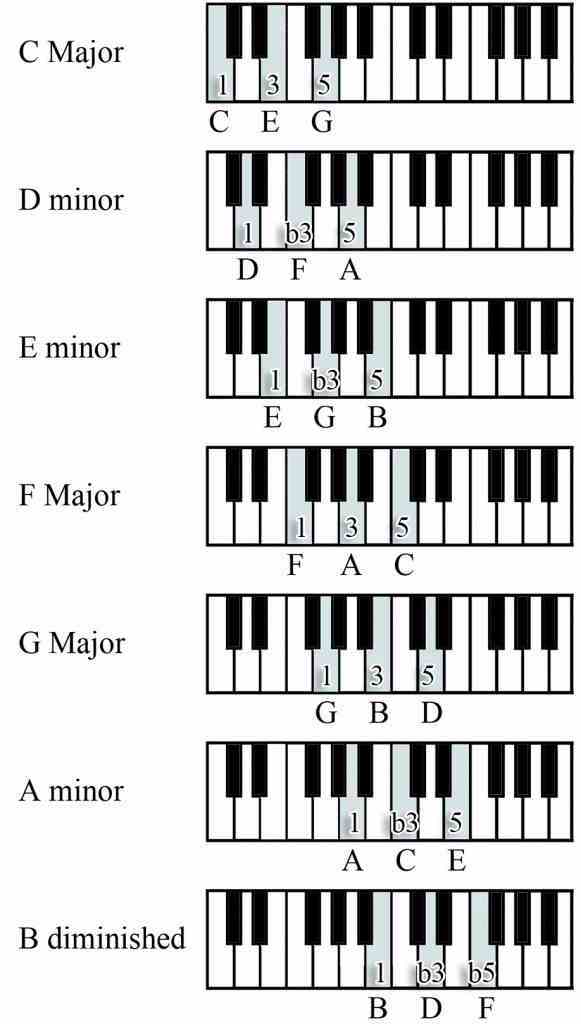


How To Play Chords



E Minor Scale Piano Music Theory



E Minor Piano Chord With Fingering Diagram Staff Notation



Basic Piano Chords For Beginners I Chords Chart Diagrams


The E Minor Scale Three Types How To Form


Chords In The Key Of E Minor


Em Chord On Piano The E Minor Chord



Discovering Minor Chord Progressions Musical U



Major Minor 9th Chords Progressions Practice Drills Exercises



D Sharp Minor And E Flat Minor Scales Piano Music Theory
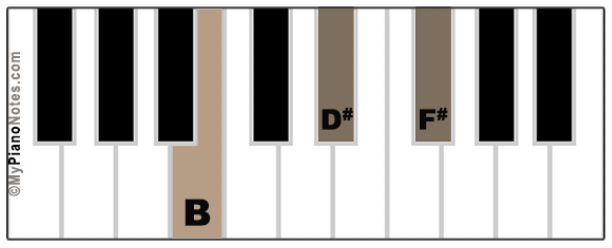


Chords In Key Of E Minor All Triads Extensions Piano Examples



E Major Scale Piano Music Theory



How To Play An E Minor 9 Chord Em9 On Piano Youtube



List Of Piano Notes Keyboard Of View Of Major And Minor Chords Piano Chords Piano Lessons Jazz Piano



E Minor Scale On Piano Piano Scale Lessons Right And Left Hand Youtube



Main Room Chord Progressions Attack Magazine



Set Of Minor Scales C D E F G A B Piano Keyboards Top View Line With Key Signatures Musical Piano Songs Chords Piano Music Lessons Learn Piano Chords


Q Tbn And9gct7wzj76vo2s Tbjrafj8avv Vbrcf7o 9wde7pjff7vp8jxrnu Usqp Cau



Pin By Play Piano Read Music On Musical Therapist Piano Music Piano Chords Piano Chords Chart



Chords In The Key Of E Minor What Is An E Minor Scale



Piano Chords For Beginners School Of Rock



Em Piano Chord E Minor Charts Sounds And Intervals



Primary Chords In Major And Minor Keys I Iv V Chords Guitar Lessons Songs Music Theory Guitar Music Chords



E Minor Chord Hd Stock Images Shutterstock
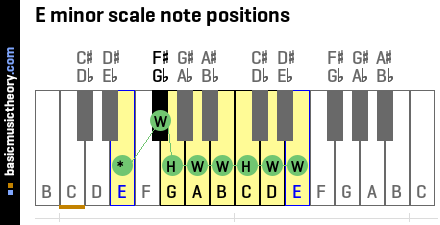


Basicmusictheory Com E Natural Minor Scale



B Natural Minor Scale Piano Music Theory


Piano Chords In The Key Of B Flat Minor



Minor Chord Chart For All 12 Keys Learn How Minor Chords Are Constructed At Http Www Zebrakeys Com Piano Music Lessons Music Theory Piano Piano Chords Chart



Piano Chords For Beginners School Of Rock



Piano Fingering Exercises Scales Chords And More



E Minor Piano Chord Em Em G Em B


Neo Soul Chords Exploring Extended Minor Chords



How To Play E Minor Guitar Scales Fender Play



E Major Scale Charts For Piano



Amazon Com Piano Chord Poster 12 X18 And Major Minor Scale Chart 8 5 X11 Combo Educational Charts For Pianists Songwriters And Producers Perfect Guide For Learning To Play Keyboard And Write Music Posters Prints



List Of Piano Chords Free Chord Charts Piano Chords Piano Scales Piano Chords Chart
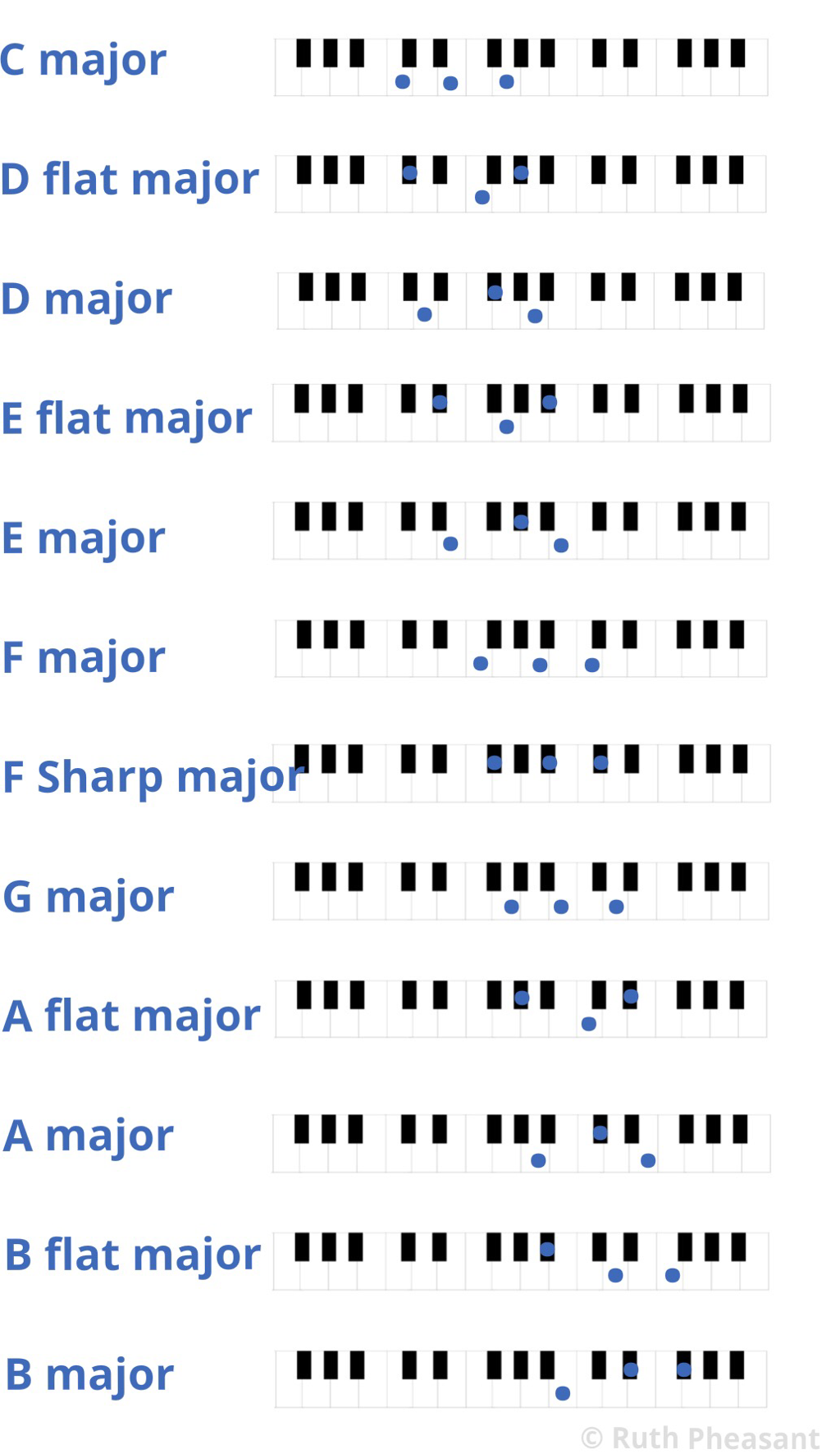


Major And Minor Chords On The Piano Ruth Pheasant Piano Lessons



E M Piano Chord How To Play The E Sharp Minor Chord Piano Chord Charts Net



Emin6 Em6 E Minor 6 Chase Norris
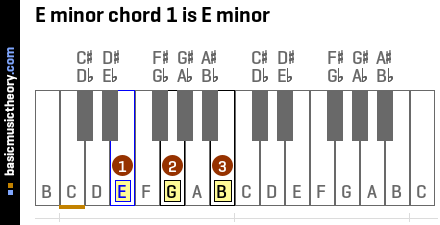


Basicmusictheory Com E Minor Chords


Major And Minor Primary Chords On Piano In All Keys I Iv V Chords


Chords In The Key Of E Minor
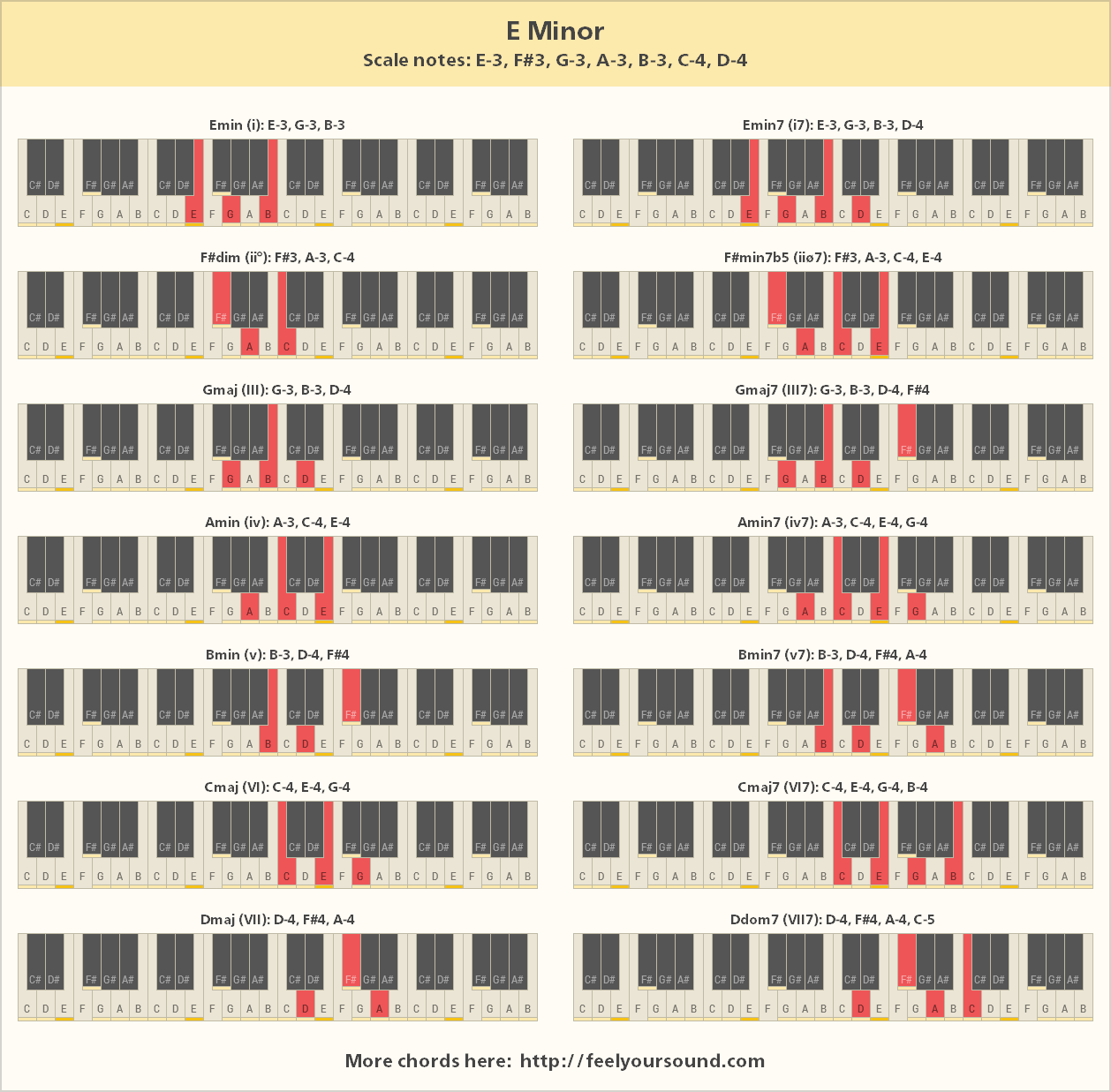


Chords And Scale Notes Of E Minor
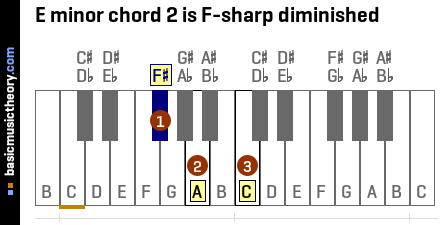


Basicmusictheory Com E Minor Chords


Piano Chord Theory



Key Of E Minor Scale Key Signature And Primary Chords Youtube
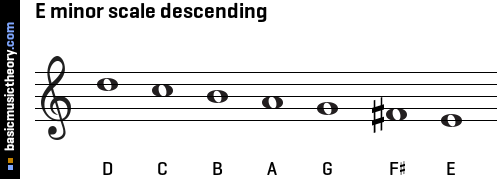


Basicmusictheory Com E Natural Minor Scale



E Minor Scale Treble Clef Page 1 Line 17qq Com


Em7 Chord On Piano E Minor Seventh E Minor 7


The E Minor Scale Three Types How To Form


Q Tbn And9gcsagcus Gekpi2mo9rejvk9r5nhvrauaci4oyosciolragkfz4j Usqp Cau



What Are The Technical Names In Music What Do They Mean School Of Composition



How To Form And Play E Harmonic Minor Scale On Piano Youtube



The Pentatonic Scale Major And Minor Piano Chords Chart Piano Music Piano Sheet Music Free



Minor Scale Diatonic Chords Piano Music Theory



How To Play The E Minor Chord On Piano And Keyboard Em Emin Youtube



Major And Minor Desi Scales In All 12 Keys With Flats And Sharps Piano Music Learn Piano Piano Scales
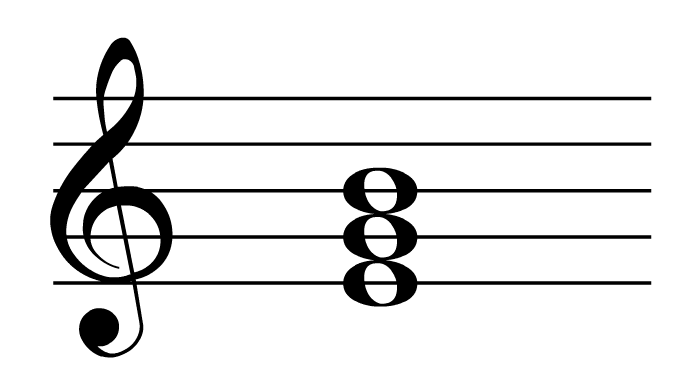


Em Piano Chord Piano Chord Chart 8notes Com



Chord Du Jour Dictionary E Minor Scale



Piano Chords In The Key Of E Minor Em Emin Youtube



How To Play Minor Chords On The Piano Julie Swihart
:max_bytes(150000):strip_icc()/E-minor-chord-piano-56f561b45f9b58298664852f.png)


Minor Piano Triads



How To Play Minor Chords On The Piano Julie Swihart
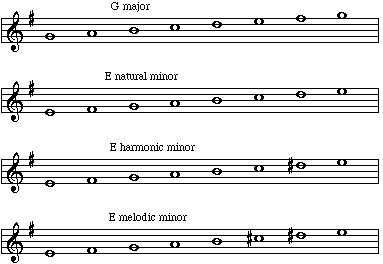


E Minor Chord On Guitar Chord Shapes Scale Popular Songs In The Key



E Natural Minor Scale Piano Music Theory



Chords And Scale Notes Of E Minor


Minor Chords Basic Piano Chords For Beginners
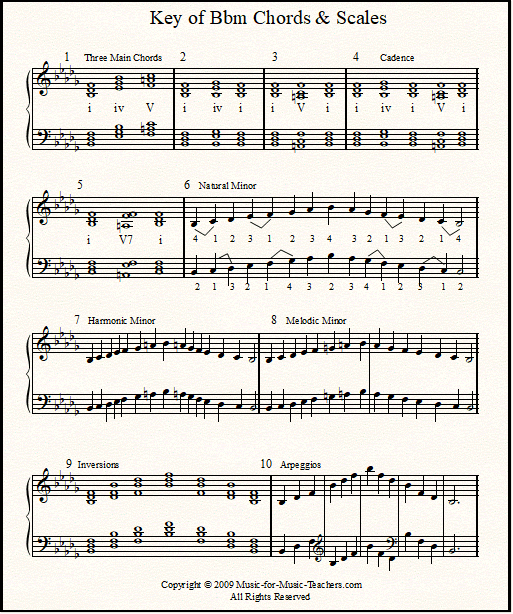


Harmonic Minor Scale And Chords Natural And Melodic Minor Piano Music Scales
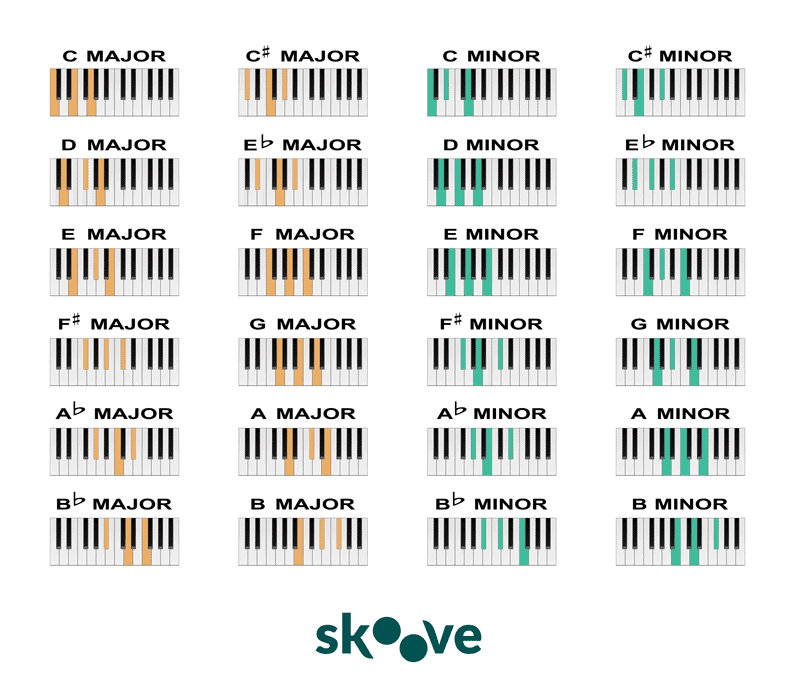


Basic Piano Chords For Beginners I Chords Chart Diagrams


コメント
コメントを投稿